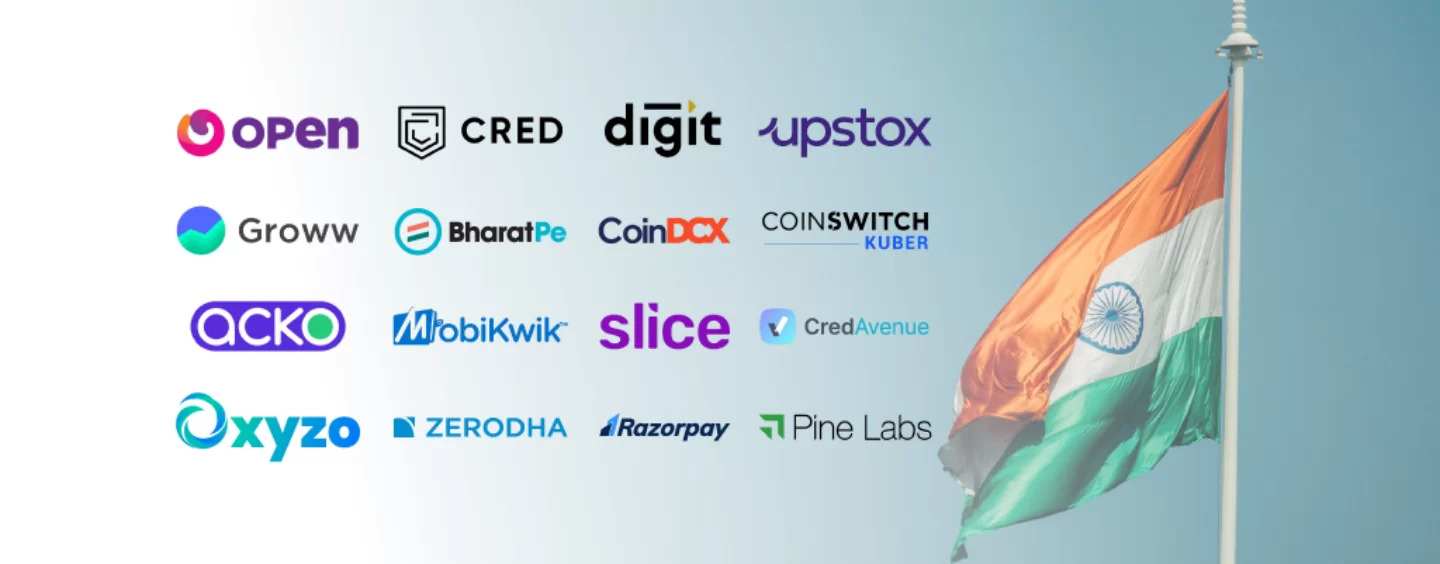Introduction
Fintech, short for Financial Technology, is a rapidly growing sector that has revolutionized the financial industry around the world. In India, the Fintech landscape has seen immense growth and innovation in recent years, positioning the country as one of the key players in this realm. Fintech companies in India are disrupting traditional financial services by leveraging technology to offer innovative solutions to consumers, businesses, and financial institutions.
This article aims to provide an overview of the Fintech industry in India, highlighting the definition of Fintech, the growth it has witnessed, and the role that Fintech companies play in India’s financial landscape.
Fintech refers to the use of technology to deliver financial services in a more efficient, convenient, and cost-effective way. It encompasses a wide range of services including digital payments, peer-to-peer lending, digital banking, wealth management, insurance, and much more. By harnessing the power of advanced technologies such as artificial intelligence, machine learning, blockchain, and data analytics, Fintech companies are able to offer innovative solutions that streamline processes, enhance customer experience, and democratize financial services.
The growth of the Fintech sector in India has been remarkable. According to the NASSCOM report, the Indian Fintech market is estimated to reach $31 billion by 2020, growing at a CAGR of 22%. Factors like government initiatives, increased smartphone penetration, digital literacy, and favorable regulatory environment have contributed to the rapid growth of Fintech companies in India. These companies have disrupted traditional financial players by offering faster, more accessible and technologically advanced services that cater to the evolving needs of the consumers.
Fintech companies in India are transforming various sectors within the financial industry and playing a crucial role in shaping the future of finance. They are bridging the gap between the unbanked population and financial services, providing affordable and inclusive solutions for financial inclusion. These companies are reshaping the payment landscape, changing the way people transact and do business. Moreover, they are empowering individuals and businesses by providing them with access to credit through peer-to-peer lending platforms, assisting in wealth management and investment decisions, and enabling personalized financial planning and budgeting.
Definition of Fintech
Fintech, short for Financial Technology, is a term used to describe the application of technology in the financial sector. It encompasses various technological innovations and advancements that are reshaping the way financial services are delivered. Fintech companies leverage cutting-edge technologies such as artificial intelligence, machine learning, blockchain, and data analytics to develop and offer innovative financial solutions.
At its core, Fintech aims to enhance the efficiency, accessibility, and affordability of financial services. It enables the automation and digitization of traditional financial processes, making them faster, more secure, and convenient for users. Fintech solutions range from digital payment platforms and mobile banking applications to peer-to-peer lending platforms and robo-advisory services.
One of the key aspects of Fintech is its ability to cater to the underserved population by democratizing financial services. Fintech companies provide access to financial products and services to individuals and businesses who were previously excluded from the traditional banking system. Through innovative mobile apps and digital platforms, Fintech has made it easier for people to open bank accounts, transfer funds, apply for loans, and manage their finances.
Furthermore, Fintech is driving financial inclusion by revolutionizing payment systems. Digital payment platforms and mobile wallets are becoming increasingly popular, allowing users to make quick and secure transactions without the need for physical cash. This has not only made payments more convenient but has also reduced the reliance on traditional banking infrastructure.
In addition, Fintech has disrupted the lending landscape with the emergence of peer-to-peer lending platforms. These platforms connect borrowers directly with potential lenders, eliminating the intermediaries and reducing borrowing costs for individuals and small businesses. This has opened up new avenues for funding and has provided access to credit for those who may have been overlooked by traditional financial institutions.
Overall, Fintech is transforming the financial industry by blending technology with finance, creating a more efficient, inclusive, and customer-centric financial ecosystem. It is changing the way people save, invest, borrow, and transact, making financial services more accessible, transparent, and personalized. As Fintech continues to evolve, we can expect further advancements and innovations that will reshape the financial landscape.
Growth of Fintech in India
The Fintech sector in India has experienced remarkable growth in recent years, positioning the country as one of the leading hubs for Fintech innovation. The growth of Fintech in India can be attributed to several factors that have created a favorable environment for the sector to flourish.
Firstly, government initiatives such as Digital India and demonetization have played a crucial role in driving the adoption of digital financial services. Demonetization, in particular, led to a surge in digital payments as people turned to digital alternatives to fulfill their financial needs. The government’s push for financial inclusion and the widespread availability of affordable smartphones have also contributed to the growth of Fintech in India.
Furthermore, the Indian population, particularly the younger generation, has shown a growing interest in technology-enabled financial services. With a large percentage of the population being tech-savvy and digitally inclined, the demand for Fintech solutions has increased significantly.
Additionally, Fintech start-ups in India have received substantial funding and support from domestic and international investors. This influx of capital has fueled the growth of Fintech companies, allowing them to expand their operations, develop innovative products, and scale their businesses. The availability of venture capital, angel investors, and government schemes that support start-ups has further boosted the growth of the Fintech sector.
The regulatory environment in India has also played a critical role in fostering the growth of Fintech. The Reserve Bank of India (RBI) has introduced various regulatory reforms and guidelines to promote innovation and collaboration in the Fintech industry. Initiatives such as the Unified Payments Interface (UPI) and the opening of application programming interfaces (APIs) have facilitated interoperability and created a conducive ecosystem for Fintech companies to thrive.
The growth of digital infrastructure and increasing internet penetration have further supported the growth of Fintech in India. The advent of affordable smartphones and the availability of high-speed mobile internet have enabled more people to access and use Fintech services. This has contributed to the democratization of financial services, making them accessible to a larger segment of the population.
Overall, the growth of Fintech in India has been driven by a combination of government initiatives, changing consumer preferences, investor interest, supportive regulatory policies, and technological advancements. As the ecosystem continues to evolve, we can expect further growth and innovation in the Fintech sector, transforming the way financial services are delivered and consumed in India.
Role of Fintech Companies in India’s Financial Landscape
Fintech companies in India are playing a pivotal role in reshaping the country’s financial landscape. They are disrupting traditional financial institutions and revolutionizing the way financial services are accessed and consumed. Here are some key roles that Fintech companies are playing in India’s financial ecosystem:
1. Democratizing Financial Services: Fintech companies are making financial services accessible to a wider population in India. Through their innovative technology-driven solutions, they are bringing financial inclusion to the unbanked and underbanked segments of society. By leveraging mobile applications and digital platforms, Fintech companies are enabling individuals and businesses to open bank accounts, access credit, make digital payments, and invest in financial products with ease.
2. Driving Innovation and Collaboration: Fintech companies are fostering innovation in India’s financial sector. They are continuously developing new products and services that address the evolving needs of consumers and businesses. Fintech start-ups are collaborating with traditional financial institutions to offer innovative solutions that combine the agility and customer-centric approach of Fintech with the trust and stability of established financial institutions. This collaboration is driving the transformation of the industry and redefining the customer experience.
3. Enhancing Financial Inclusion: Fintech companies are bridging the gap between individuals and financial services by providing innovative solutions that cater to the specific needs of underserved segments. For example, they are leveraging alternative data sources and advanced credit assessment algorithms to offer credit to individuals who may not have a traditional credit history. By providing access to financial products and services, Fintech companies are empowering individuals and businesses to take control of their finances, create economic opportunities, and improve their quality of life.
4. Improving Efficiency and Convenience: Fintech companies are streamlining financial processes and making them more efficient and convenient for users. Through digitization and automation, these companies are reducing paperwork, eliminating the need for physical visits to banks, and providing instant access to financial services. Whether it is transferring funds, paying bills, applying for loans, or managing investments, Fintech companies are enabling individuals and businesses to carry out these tasks quickly and conveniently from the comfort of their smartphones.
5. Encouraging Financial Literacy: Fintech companies in India are not only offering financial products and services but also educating consumers about financial management. Many Fintech apps provide tools and resources for personal finance management, budgeting, and financial planning. By promoting financial literacy, Fintech companies are empowering individuals to make informed financial decisions and improve their financial well-being.
In summary, Fintech companies are revolutionizing India’s financial landscape by democratizing financial services, driving innovation, enhancing financial inclusion, improving efficiency and convenience, and promoting financial literacy. As Fintech continues to evolve and gain momentum, it is set to have a profound impact on the way financial services are delivered, consumed, and experienced in India.
Types of Fintech Companies in India
The Fintech sector in India is diverse and encompasses a wide range of companies offering innovative financial solutions. These companies are leveraging technology to disrupt traditional financial services and cater to the changing needs of consumers and businesses. Here are some of the key types of Fintech companies in India:
1. Payment and Wallet Solutions: Payment and wallet solutions are one of the most prominent types of Fintech companies in India. They provide digital payment platforms that allow users to make seamless and secure transactions through mobile apps or digital wallets. These companies have transformed the way people transact, facilitating cashless payments, peer-to-peer transfers, and online shopping.
2. Peer-to-Peer Lending Platforms: Peer-to-peer lending platforms have emerged as an alternative to traditional banking institutions. They connect borrowers directly with individual lenders, cutting out intermediaries and reducing borrowing costs. These platforms use data-driven algorithms to assess the creditworthiness of borrowers and facilitate loans, providing access to credit for individuals and small businesses.
3. Digital Insurance Providers: Fintech companies in the insurance sector are leveraging technology to offer digital insurance products and services. They provide platforms where users can compare and purchase insurance policies, file claims, and receive personalized insurance recommendations. These companies are making insurance more accessible, affordable, and convenient for individuals and businesses.
4. Wealth Management and Robo-advisory Platforms: Wealth management and robo-advisory platforms are using algorithms and automation to provide personalized investment advice and portfolio management services. These platforms use data analytics and machine learning to assess individual risk profiles and create optimal investment strategies. They are making wealth management services more accessible and cost-effective for retail investors.
5. Personal Finance Management Tools: Fintech companies are offering personal finance management tools that help individuals track their expenses, set budgets, and manage their finances more effectively. These tools provide insights into spending patterns, offer financial goal-setting features, and provide recommendations for better financial management.
6. Digital Banking Platforms: Digital banking platforms are redefining the traditional banking experience by offering innovative banking services through digital channels. They provide features such as instant account opening, virtual debit cards, real-time transaction monitoring, and personalized banking solutions. These platforms are transforming the way individuals and businesses interact with financial institutions.
There are several other types of Fintech companies in India, including digital remittance platforms, blockchain-based solutions, crowdfunding platforms, regulatory technology (RegTech) companies, and more. Each of these companies is leveraging technology to offer disruptive solutions that are changing the face of finance in India.
It is important to note that many Fintech companies in India often operate across multiple categories, combining different services to provide comprehensive solutions. This convergence of services is driving innovation and creating a dynamic ecosystem within the Fintech industry in India.
Payment and Wallet Solutions
Payment and wallet solutions are an integral part of the Fintech landscape in India. These companies offer digital payment platforms and mobile wallet services that have revolutionized the way people transact and manage their finances. Here’s an overview of payment and wallet solutions in the Indian Fintech space:
1. Digital Payment Platforms: Fintech companies in India have introduced digital payment platforms that allow users to make quick and secure transactions through mobile apps or websites. These platforms enable users to transfer money to individuals, pay bills, recharge mobile phones, and make online purchases. By providing a seamless digital payment experience, these platforms have reduced reliance on cash and transformed the way people transact in India. Some popular digital payment platforms in India include Paytm, Google Pay, PhonePe, and Amazon Pay.
2. Mobile Wallets: Mobile wallets, also known as e-wallets, have gained significant traction in India. These digital wallets store virtual money that users can use to make payments for goods and services. Users can load money onto their wallets either by linking their bank accounts or using other digital payment methods. Mobile wallets offer convenience, speed, and security, making them popular among smartphone users. They are widely accepted at retail outlets, restaurants, e-commerce platforms, and even for online utility bill payments. Paytm, Mobikwik, and Freecharge are some of the popular mobile wallets in India.
3. UPI-based Solutions: Unified Payments Interface (UPI) has emerged as a widely adopted payment infrastructure in India. Several fintech companies offer UPI-based solutions that allow users to make instant peer-to-peer payments using their smartphones. UPI enables users to link multiple bank accounts to a single mobile app and transfer funds directly from one bank account to another in real-time. This has made sending and receiving money as easy as sending a text message. Fintech companies like Google Pay, PhonePe, and Paytm have integrated UPI into their platforms, enabling users to make seamless transactions through UPI.
4. QR Code Payments: QR code-based payments have gained popularity in India, enabling secure and contactless transactions. Fintech companies have introduced QR code solutions that allow merchants to generate a unique QR code that customers can scan using their mobile phones to make payments. This eliminates the need for physical cash or card transactions, providing a convenient and hygienic payment option. QR code-based payment solutions have seen widespread adoption in retail stores, restaurants, and small businesses across India.
Payment and wallet solutions have revolutionized the way people transact and manage their money in India. These platforms have made payments faster, more convenient, and secure, reducing the dependency on physical currency. With the increasing adoption of digital payment platforms and mobile wallets, the cashless ecosystem is rapidly evolving in the country. Fintech companies continue to innovate in this space, introducing features like loyalty programs, bill split options, and integration with other financial services, further enhancing the user experience and driving the growth of digital payments in India.
Peer-to-Peer Lending Platforms
Peer-to-peer (P2P) lending platforms have emerged as a disruptive force in the Indian Fintech industry, offering an alternative borrowing and lending option for individuals and small businesses. These platforms connect borrowers directly with lenders, eliminating the need for traditional financial intermediaries like banks. Here’s an overview of peer-to-peer lending platforms in India:
1. Access to Credit: Peer-to-peer lending platforms in India provide individuals and small businesses with access to credit that may have been difficult to obtain through traditional channels. These platforms leverage technology to assess creditworthiness based on factors beyond traditional credit scores. They consider alternate data sources such as social media profiles, digital footprints, and transactional history to determine a borrower’s creditworthiness.
2. Lower Interest Rates: P2P lending platforms often offer competitive interest rates compared to traditional financial institutions. By eliminating overhead costs associated with traditional banking, such as maintaining physical branches, these platforms can pass on the cost savings to borrowers in the form of lower interest rates. This makes borrowing more affordable and attractive for individuals and businesses.
3. Diverse Borrower Profiles: P2P lending platforms cater to a wide range of borrower profiles, including those with limited credit history or low credit scores. These platforms often provide loans to individuals who may have been overlooked by traditional lenders due to their financial situation. This inclusivity promotes financial inclusion and provides opportunities for borrowers to establish credit history and improve their financial well-being.
4. Choice and Transparency: P2P lending platforms offer borrowers a choice of lenders and loan terms. Borrowers can review multiple loan offers and select the one that best suits their needs. This transparency and competition in the lending space empower borrowers to make informed decisions and negotiate favorable terms. Additionally, P2P lending platforms provide transparency in their fee structures, ensuring borrowers understand the costs associated with their loans.
5. Investor Opportunities: P2P lending platforms also provide opportunities for individuals to become lenders and earn returns on their investments. Lenders can diversify their investment portfolio by lending to a diverse set of borrowers and earn interest on the loans they provide. This creates an alternative investment avenue for individuals looking to generate passive income while supporting borrowers in need of financial assistance.
6. Digital Experience: P2P lending platforms offer a seamless digital experience, enabling borrowers and lenders to interact and transact online. Borrowers can create loan applications, submit documentation, and review loan offers through user-friendly interfaces. Similarly, lenders can easily browse through loan requests, assess borrower profiles, and make lending decisions. The digital nature of P2P lending platforms ensures convenience, speed, and accessibility for both borrowers and lenders.
Peer-to-peer lending platforms have the potential to disrupt the traditional lending ecosystem in India by providing an alternative to traditional banks. These platforms facilitate a direct connection between borrowers and lenders, creating a more efficient and inclusive credit marketplace. As the P2P lending sector continues to evolve, regulatory frameworks are being put in place to ensure the protection of borrowers and lenders and to foster a sustainable and transparent lending environment.
Digital Insurance Providers
Digital insurance providers have emerged as a significant player in the Indian Fintech landscape, transforming the way insurance products and services are offered and consumed. These companies leverage technology to offer digital insurance solutions, making insurance more accessible, affordable, and convenient for individuals and businesses. Let’s take a closer look at the role of digital insurance providers in India:
1. Ease of Access: Digital insurance providers have simplified the process of accessing insurance products. Rather than relying on traditional brick-and-mortar branches, these companies offer online platforms where individuals can browse, compare, and purchase insurance policies. This eliminates the need for face-to-face interactions and paperwork, making the insurance buying process easier and more convenient.
2. Customization and Personalization: Digital insurance providers offer the flexibility to customize insurance policies based on the unique needs and preferences of customers. Through digital platforms, individuals can select coverage options, add or remove riders, and adjust policy terms to suit their requirements. This level of customization allows individuals to tailor insurance plans to their specific needs, promoting a personalized and customer-centric approach.
3. Competitive Premiums: Digital insurance providers often offer competitive premium rates compared to traditional insurance companies. By leveraging technology and streamlined processes, these providers are able to reduce administrative costs, which translates into lower premiums for customers. This affordability makes insurance more accessible to a wider segment of the population.
4. Quick and Convenient Claims Process: Digital insurance providers prioritize user experience and efficiency when it comes to claims processing. Through digital platforms, policyholders can file claims easily and track the progress of their claims in real-time. This streamlined and transparent process minimizes paperwork and reduces the time taken for claim settlements, providing policyholders with a hassle-free and efficient claims experience.
5. Data-Driven Underwriting: Digital insurance providers leverage data analytics and innovative underwriting models to assess risk and determine premiums. They use a wide range of data sources, including social media profiles, digital footprints, and real-time data, to evaluate the risk profile of applicants. This data-driven approach allows these companies to provide more accurate pricing and coverage options, benefiting both the insurance provider and the policyholder.
6. Emphasis on Customer Experience: Digital insurance providers prioritize providing a seamless and user-friendly experience to their customers. They invest in intuitive and interactive digital platforms that enable individuals to manage their policies, receive policy updates, and access information about their coverage conveniently. This focus on customer experience fosters satisfaction and loyalty among policyholders.
Digital insurance providers are reshaping the insurance industry and offering innovative solutions that cater to the evolving needs of Indian consumers. Their focus on accessibility, affordability, customization, and customer-centricity is driving the adoption of insurance products among a broader segment of the population. As technology continues to advance, we can expect further innovations in the digital insurance space, leading to a more efficient and inclusive insurance ecosystem in India.
Wealth Management and Robo-advisory Platforms
Wealth management and robo-advisory platforms have gained significant traction in the Indian Fintech industry, revolutionizing the way individuals manage their investments and plan for their financial future. These platforms leverage technology and data analytics to provide personalized investment advice and portfolio management services. Let’s explore the role of wealth management and robo-advisory platforms in India:
1. Personalized Investment Advice: Wealth management and robo-advisory platforms use algorithms and advanced analytics to assess an individual’s risk tolerance, financial goals, and investment preferences. Based on this assessment, they provide personalized investment advice tailored to the individual’s unique needs and objectives. This approach eliminates the need for cookie-cutter investment strategies and ensures that individuals receive advice aligned with their specific circumstances.
2. Accessibility and Affordability: Wealth management and robo-advisory platforms make professional investment services accessible to a wider range of individuals. Through online platforms and mobile apps, anyone with an internet connection can access these services, eliminating the barriers of physical location and hefty account minimums. Additionally, these platforms often have lower fees compared to traditional wealth management services, making them more affordable for retail investors.
3. Data-driven Portfolio Management: Robo-advisory platforms use data analytics and algorithms to construct and manage investment portfolios. They consider thousands of data points, including market trends, economic indicators, and individual preferences, to rebalance portfolios and make investment decisions. This data-driven approach ensures that portfolios are managed in a disciplined and objective manner, removing human biases from the investment process.
4. Diversification and Risk Management: Wealth management and robo-advisory platforms emphasize diversification and risk management to achieve optimal investment outcomes. These platforms construct portfolios that are well-diversified across asset classes, sectors, and geographies, thereby reducing concentration risk. Additionally, they continuously monitor portfolios and rebalance them to maintain an appropriate risk-return profile based on market conditions and the individual’s investment objectives.
5. Education and Financial Planning Tools: Many wealth management and robo-advisory platforms provide educational resources and financial planning tools to empower individuals to make informed investment decisions. Through informative articles, calculators, and interactive tools, these platforms promote financial literacy and help individuals understand the various aspects of investing, risk management, and long-term financial planning.
6. Transparency and Control: Wealth management and robo-advisory platforms offer transparency in terms of investment decisions, fees, and performance. Individuals can access real-time information about their investments, track progress towards their financial goals, and understand the impact of fees on their returns. This transparency and control empower individuals to actively participate in the management of their investments and make informed decisions.
Wealth management and robo-advisory platforms are reshaping the investment landscape in India by providing accessible, personalized, and data-driven investment services. These platforms combine technology with professional expertise to deliver investment solutions that cater to the individual’s unique circumstances, preferences, and goals. As digital technologies continue to advance, we can expect further enhancements and innovations in the wealth management and robo-advisory space, empowering individuals to navigate the complexities of investing and achieve their financial aspirations.
Personal Finance Management Tools
Personal finance management tools offered by Fintech companies have become invaluable resources for individuals looking to take control of their finances, track expenses, and achieve their financial goals. These digital platforms provide users with tools and features that facilitate budgeting, expense tracking, and financial planning. Let’s explore the role of personal finance management tools in India:
1. Expense Tracking and Budgeting: Personal finance management tools enable users to track their expenses easily and categorize them. These tools allow individuals to link their bank accounts, credit cards, and other financial accounts to automatically track their transactions. By categorizing expenses and visualizing spending patterns, users can gain insights into their financial habits and make more informed decisions about their spending.
2. Budget Management: Personal finance management tools assist users in creating and managing budgets. Users can set budget limits for different spending categories and receive alerts or notifications when they exceed those limits. These tools provide a holistic view of spending versus budget, helping users make necessary adjustments to align their spending with their financial goals.
3. Goal Setting and Planning: Personal finance management tools allow users to set financial goals and track progress towards achieving them. Whether it’s saving for a down payment, an emergency fund, or a vacation, these tools provide visual representations and reminders to keep individuals motivated and on track. They also offer insights into how adjustments in spending and saving can impact the users’ ability to reach their goals.
4. Debt Management: Personal finance management tools help users manage their debts effectively. These tools provide features such as debt tracking, payment reminders, and debt payoff calculators. Users can visualize their outstanding debts, prioritize payments, and explore strategies to accelerate debt repayment. By offering a comprehensive view of debt obligations, these tools assist users in making informed decisions to reduce and manage their debt burden.
5. Financial Insights and Analytics: Personal finance management tools offer users personalized financial insights and analytics. By aggregating financial data, these tools generate reports and visualizations that provide users with a clear picture of their overall financial health. Users can analyze their income, expenses, and savings patterns to identify areas of improvement and make informed financial decisions accordingly.
6. Integration with Financial Accounts: Personal finance management tools integrate with users’ financial accounts, allowing for automatic data syncing. This eliminates the need for manual data entry and ensures that users have an up-to-date view of their financial status. Integration with financial accounts also enables users to view all their financial information in one centralized platform, providing convenience and ease of use.
Personal finance management tools are empowering individuals to take control of their financial lives. By providing tools for expense tracking, budgeting, goal setting, and debt management, these digital platforms offer valuable resources to improve financial literacy, guide decision-making, and foster better financial habits. As more individuals embrace these tools, we can expect to see increased financial awareness and improved financial well-being in India.
Digital Banking Platforms
Digital banking platforms have emerged as a game-changer in the Indian Fintech industry, redefining the traditional banking experience and providing customers with convenient and innovative financial solutions. These platforms leverage technology to offer a wide range of banking services through digital channels, empowering individuals and businesses to manage their finances efficiently. Let’s explore the role of digital banking platforms in India:
1. Convenient Account Opening: Digital banking platforms offer seamless and convenient account opening processes. Individuals can open bank accounts digitally without the need to visit a physical branch. The account opening process involves minimal paperwork and can be completed online within a few minutes. This digitization streamlines the account opening experience and ensures quick access to banking services.
2. Virtual Debit and Credit Cards: Digital banking platforms provide virtual debit and credit cards that can be instantly generated and used for online transactions. These virtual cards offer an added layer of security for online payments and eliminate the need for physical cards. Users can easily manage and monitor their virtual cards through the digital banking platform, enabling secure and convenient online transactions.
3. Real-Time Transaction Monitoring: Digital banking platforms allow users to monitor their transactions in real-time. Users can view their account balances, track incoming and outgoing transactions, and receive instant notifications for every transaction. This real-time visibility enables individuals and businesses to have better control over their finances and stay updated on their financial activities.
4. Seamless Fund Transfers: Digital banking platforms facilitate seamless money transfers between accounts. Users can transfer funds to other banks or within the same bank with ease and speed. These platforms often offer features like beneficiary management and quick pay options, making fund transfers convenient and accessible 24/7.
5. Personalized Financial Services: Digital banking platforms provide personalized financial services to meet the specific needs of individuals and businesses. These platforms offer features like saving goals, personalized recommendations, and financial insights based on the user’s transaction history and spending patterns. Users can track their savings progress, receive customized offers, and access tailored financial advice through the platform.
6. Integration with Third-Party Services: Digital banking platforms often integrate with various third-party services to expand their offering. They provide access to a range of services such as bill payments, loan applications, investment options, and insurance services seamlessly within the platform. Users can conveniently manage their financial activities without the need to switch between multiple applications or visit physical service providers.
7. Enhanced Security Measures: Digital banking platforms prioritize the security of customer information and transactions. They employ robust security measures such as two-factor authentication, biometric authentication, and encryption technologies to safeguard customer data. These platforms adhere to strict regulatory guidelines and industry standards, ensuring a secure banking experience for users.
Digital banking platforms have transformed the way individuals and businesses interact with financial institutions. Through their innovative features, personalized services, and convenience, these platforms offer a superior banking experience. As more customers embrace digital banking, we can expect further innovations and advancements in the digital banking ecosystem in India.
Regulation and Challenges Faced by Fintech Companies in India
The rapid growth of the Fintech sector in India has brought about several regulatory challenges that Fintech companies must navigate. While innovation and technological advancements have contributed to the growth of the sector, regulatory frameworks play a crucial role in maintaining stability and protecting consumer interests. Here’s an overview of the regulation and challenges faced by Fintech companies in India:
1. Regulatory Framework: Fintech companies in India operate within a regulatory landscape governed by various authorities such as the Reserve Bank of India (RBI), Securities and Exchange Board of India (SEBI), Insurance Regulatory and Development Authority of India (IRDAI), and others. These regulators set guidelines and standards that Fintech companies must adhere to in areas such as data protection, customer privacy, capital requirements, anti-money laundering (AML), and know your customer (KYC) norms. Compliance with these regulations is crucial for Fintech companies to ensure consumer trust and confidence.
2. Evolving Regulatory Environment: The Fintech sector is innovative and dynamic, which often presents a challenge to regulators in keeping up with the pace of technological advancements. Regulatory frameworks need to be adaptable and agile to respond to emerging risks and opportunities. Fintech companies may face uncertainties and delays in regulations, impacting their ability to innovate and scale their operations.
3. Data Privacy and Security: Fintech companies deal with vast amounts of sensitive customer data, making data privacy and security a top concern. Compliance with data protection laws, such as the General Data Protection Regulation (GDPR), is essential to safeguard customer information. Fintech companies need to implement robust security measures, encryption technologies, and strict access controls to protect against data breaches and ensure customer trust.
4. Financial Inclusion and Consumer Protection: Fintech companies have a strong focus on financial inclusion, but at the same time, they need to ensure consumer protection. Balancing the objectives of expanding access to financial services while protecting vulnerable customers from predatory practices and fraud is a delicate challenge. Fintech companies must design products and services in a manner that prioritizes consumer interests and provides transparent terms and conditions.
5. Cybersecurity Risks: As Fintech companies rely heavily on technology and digital infrastructure, they become susceptible to cybersecurity risks. The rise of cyber threats, such as hacking, data breaches, and identity theft, poses a significant challenge. Fintech companies must invest in robust cybersecurity measures, conduct regular vulnerability assessments, and educate employees and customers on best practices to mitigate these risks.
6. Access to Capital and Funding: Fintech companies require adequate capital and funding to innovate, scale their operations, and remain competitive. However, access to capital can be a challenge for early-stage Fintech start-ups, especially due to the perceived risks associated with innovative business models. Fintech companies often need to demonstrate a strong value proposition, sound financial projections, and compliance with regulatory requirements to secure funding from investors or financial institutions.
Despite these challenges, the Indian government and regulators recognize the importance of fostering innovation in the Fintech sector. Efforts are being made to create a conducive regulatory environment that balances innovation with consumer protection. Regulatory sandboxes, collaborations between regulators and industry stakeholders, and initiatives to promote digital payments and financial inclusion are positive steps toward addressing the challenges faced by Fintech companies and creating an ecosystem that nurtures innovation and growth.
Conclusion
The Fintech sector in India has witnessed tremendous growth in recent years, transforming the financial landscape and impacting the way individuals and businesses access and manage financial services. Fintech companies have played a pivotal role in driving financial inclusion, promoting innovation, and improving the customer experience.
From payment and wallet solutions to peer-to-peer lending platforms, digital insurance providers, wealth management and robo-advisory platforms, personal finance management tools, digital banking platforms, and more, Fintech companies in India are offering a wide range of innovative solutions that cater to the diverse needs of consumers.
However, the growth of the Fintech sector in India is not without its challenges. Fintech companies must navigate a complex regulatory environment, ensuring compliance with various regulatory frameworks while maintaining a focus on customer protection and data security. Cybersecurity risks, access to funding, and the need for continuous innovation are also key challenges that Fintech companies face.
Despite these challenges, the future of the Fintech sector in India looks promising. The Indian government is taking proactive steps to create a favorable environment for innovation and collaboration, and regulators are working towards striking a balance between promoting innovation and protecting consumer interests.
As technology continues to advance and consumer expectations evolve, Fintech companies in India will continue to drive innovation, enhance financial inclusion, and shape the future of finance. With the support of regulators, investors, and customers, the Fintech sector is poised to play an increasingly prominent role in India’s financial ecosystem, empowering individuals and businesses to build a financially secure and inclusive future.

























